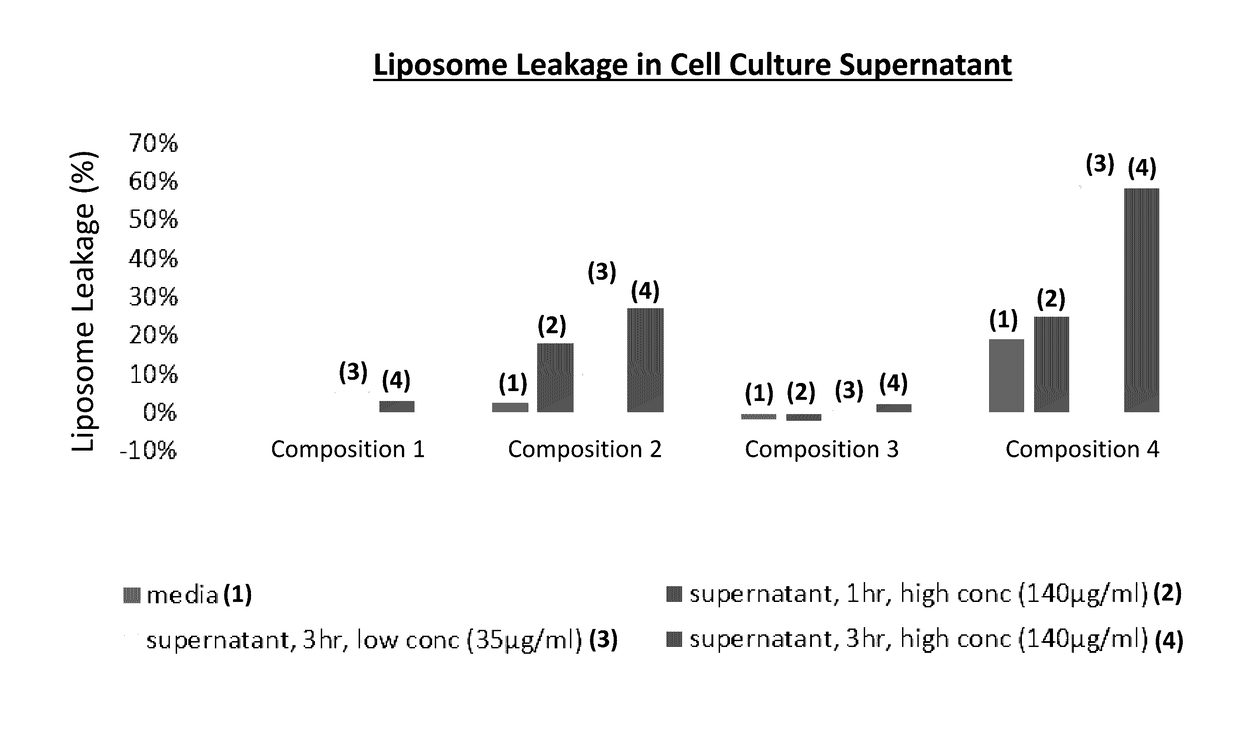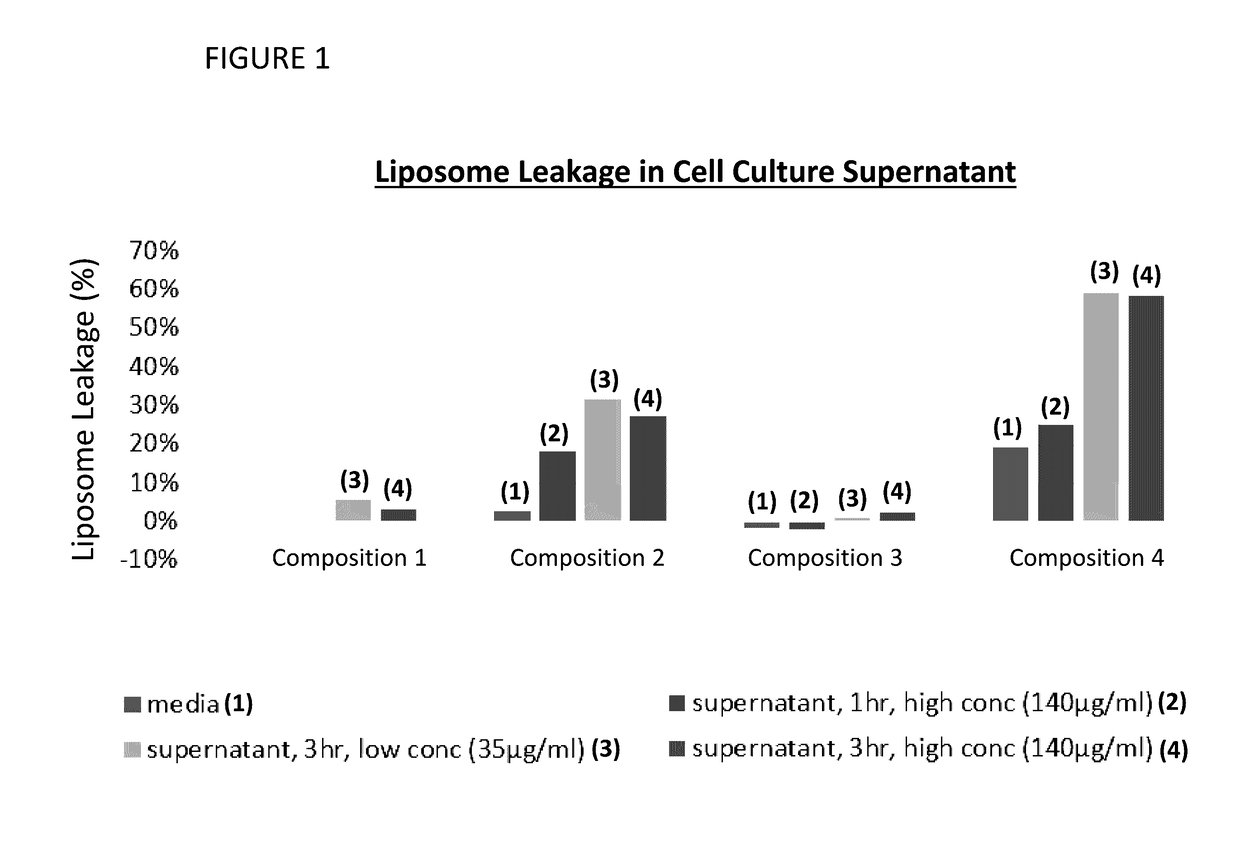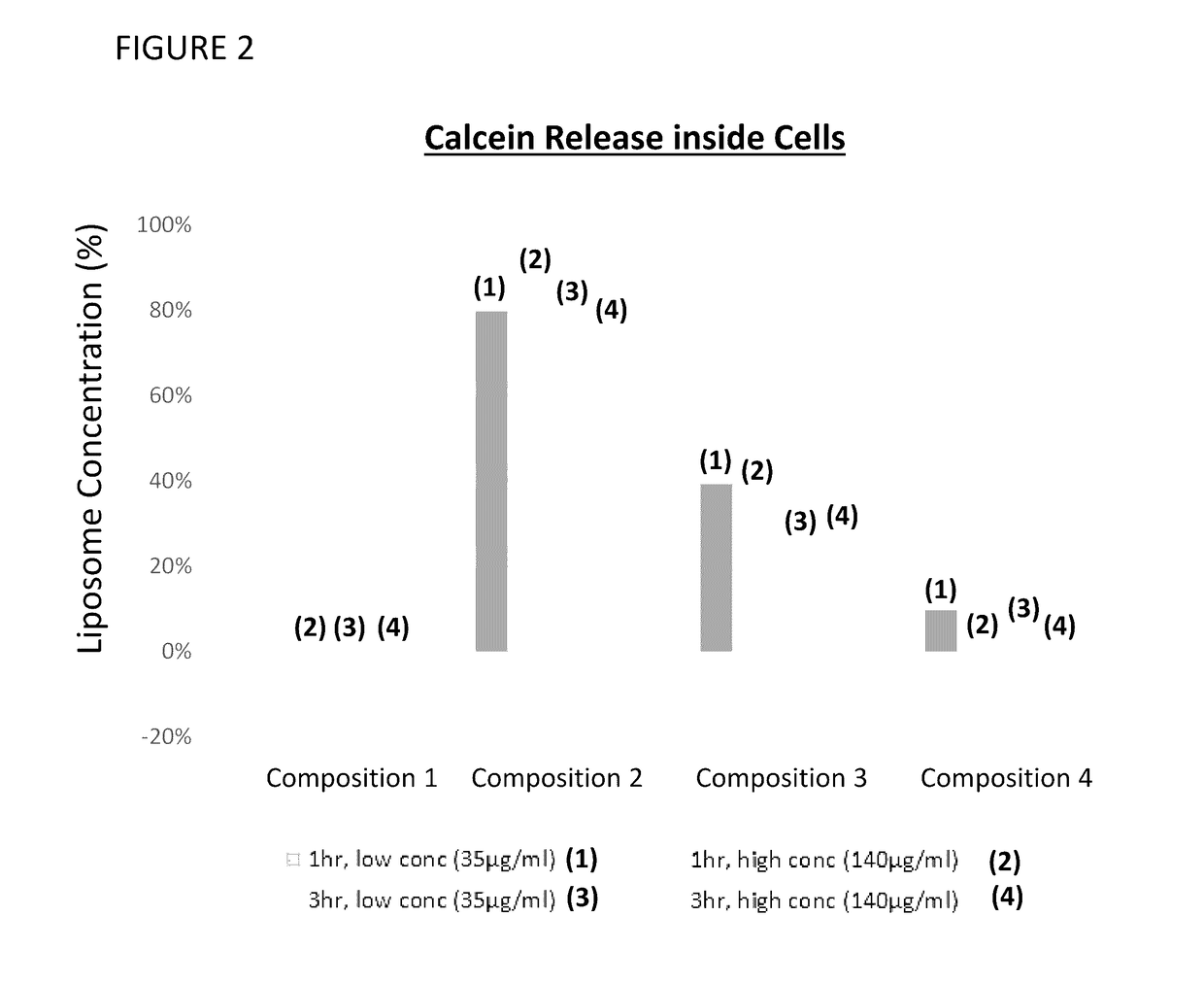Compositions and methods for treating bacterial infections
- Summary
- Abstract
- Description
- Claims
- Application Information
AI Technical Summary
Benefits of technology
Problems solved by technology
Method used
Image
Examples
example 1
pH Sensitive Liposomal Compositions
[0153]The following four liposome compositions were used (molar ratio of lipid components provided in parentheses). Calcein was encapsulated into liposomes via a flash precipitation method.
[0154]Dipalmitoylphosphatidylcholine (DPPC) / cholesterol (50 / 50) (Composition 1)
DOPE / CHEMS (6 / 4) (Composition 2);
POPE / Chol / THS (4 / 4 / 1) (Composition 3);
NAPE / DODAP / DOPC (4 / 4 / 2) (Composition 4).
[0155]The liposomal compositions were tested in a cell culture supernatant assay to determine the amount of calcein leakage as a function of various incubation times and concentrations of calcein. Media used was 2% FBS. Results of this assay are provided in FIG. 1. Composition 3 did not exhibit leakage in blank 2% FBS media or supernatant, even after 3 hr. cell culture. Composition 2 did not exhibit leakage in 2% FBS media but gradually leaked up to 30% after 3 hr. cell culture. Composition 4 exhibited 20% leakage in blank 2% FBS media and leaked up to 60% after 3 hr. cell cul...
example 2
Characterization of Liposomal Amikacin Formulations
[0158]The following formulations were evaluated for various parameters such as particle size, and amikacin sulfate-to-lipid ratio as shown in Table 5. Formulations were manufactured via an in-line infusion process. The lipid stream was infused at a lipid concentration of 20 mg / mL to 80 mg / mL at a flow rate of 10 mL / min to about 25 mL / min, and the aqueous amikacin sulfate stream was infused at an amikacin sulfate concentration of 40 mg / mL to about 100 mg / mL at a flow rate of 15 mL / min to 40 mL / min. After infusion, the products were washed to remove unencapsulated amikacin sulfate using tangential flow filtration (TFF).
TABLE 5Summary of Liposomal Amikacin FormulationsAmikacinComponent (Comp.) IdentityTarget Molar Ratiosulfate-Particle Size Comp.Comp.Comp.Comp.Comp.Comp.Comp.Comp.to-lipid(postTFF)#12341234ratioSize (nm)% PD3DOPECHEMS32—220574POPECholTHS4410.52205245NAPEDODAPDOPC2210.44223366POPCCHEMSOAlc5580.3207257dioleinCHEMS—320.862...
example 3
Toxicity of Liposomal Amikacin Formulations
[0166]To evaluate toxicity of liposomal amikacin formulations, differentiated healthy THP-1 cells were treated 4× (1× every 24 hours) with 16, 32, 64, or 128 μg / mL amikacin concentrations for the seven liposomal amikacin formulations 8, 14, 15, 31, 33, 35, 39 (Table 5 for lipid components). Formulation 14 increases cell death >25% at 128 μg / mL compared to no treatment control, formulation 8 increases cell death 11% at 128 μg / mL, formulation 15 and formulation 31 show no difference in cell death compared to no treatment control, and formulations 33 and 39 fall in between formulation 8 and formulation 15 cell death levels (FIGS. 8 and 9).
PUM
| Property | Measurement | Unit |
|---|---|---|
| weight ratio | aaaaa | aaaaa |
| concentration | aaaaa | aaaaa |
| concentration | aaaaa | aaaaa |
Abstract
Description
Claims
Application Information
 Login to View More
Login to View More - R&D
- Intellectual Property
- Life Sciences
- Materials
- Tech Scout
- Unparalleled Data Quality
- Higher Quality Content
- 60% Fewer Hallucinations
Browse by: Latest US Patents, China's latest patents, Technical Efficacy Thesaurus, Application Domain, Technology Topic, Popular Technical Reports.
© 2025 PatSnap. All rights reserved.Legal|Privacy policy|Modern Slavery Act Transparency Statement|Sitemap|About US| Contact US: help@patsnap.com



